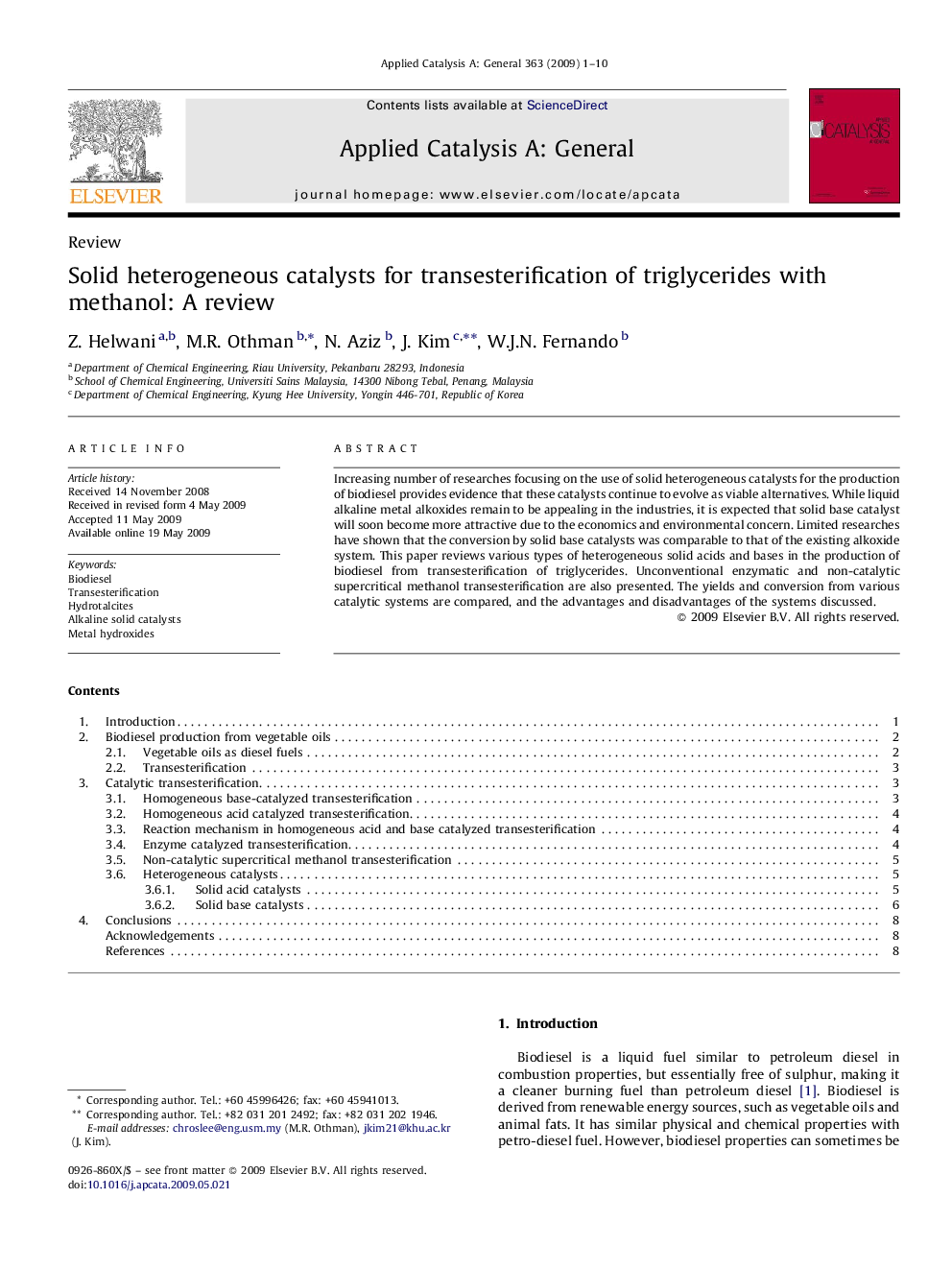| Article ID | Journal | Published Year | Pages | File Type |
|---|---|---|---|---|
| 42300 | Applied Catalysis A: General | 2009 | 10 Pages |
Increasing number of researches focusing on the use of solid heterogeneous catalysts for the production of biodiesel provides evidence that these catalysts continue to evolve as viable alternatives. While liquid alkaline metal alkoxides remain to be appealing in the industries, it is expected that solid base catalyst will soon become more attractive due to the economics and environmental concern. Limited researches have shown that the conversion by solid base catalysts was comparable to that of the existing alkoxide system. This paper reviews various types of heterogeneous solid acids and bases in the production of biodiesel from transesterification of triglycerides. Unconventional enzymatic and non-catalytic supercritical methanol transesterification are also presented. The yields and conversion from various catalytic systems are compared, and the advantages and disadvantages of the systems discussed.
Graphical abstractHydrotalcite consisted of positively charged layers in lamellar structures with divalent/trivalent cations at the centers of presumably octahedral sites of the hydroxide sheets whose vertexes contain hydroxide ions promoted dissociation of triglycerides into diglyceride and monoglyceride, leading to methyl ester and glycerol generation in the vicinity of interlayer spacing or within the two sublayers.Figure optionsDownload full-size imageDownload as PowerPoint slide
